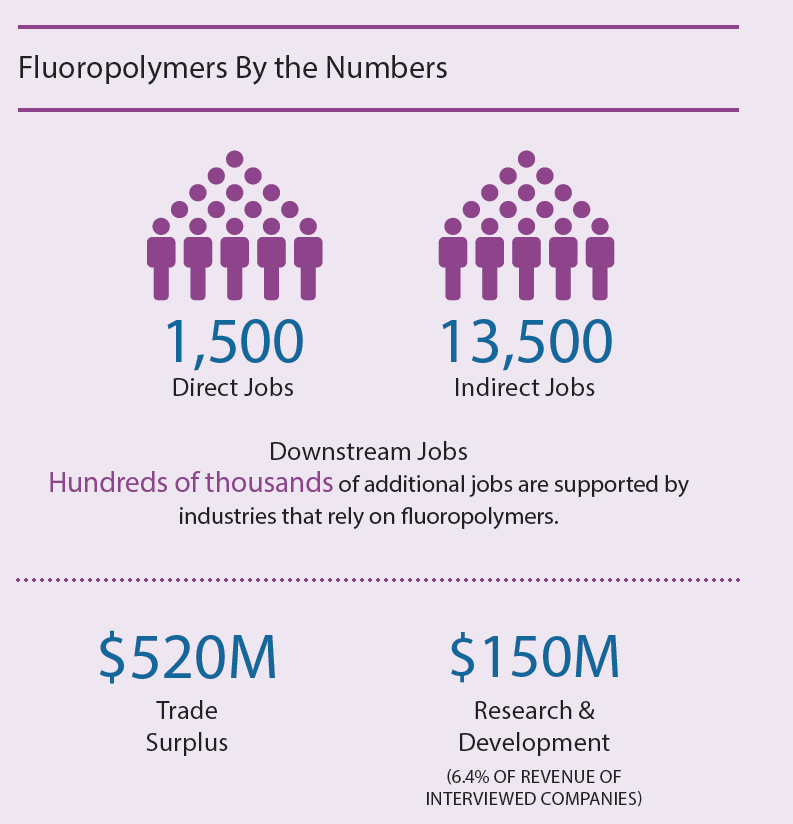 Loading...
Loading...
Fluoropolymers provide vital performance characteristics to products or production processes. Collectively this creates socio-economic value far beyond the direct impact created by the industry itself. While not all of these benefits can be easily quantified, the report analyzes this value in seven strategically important sectors:
Electronics: The largest downstream sector by sales, fluoropolymers are critical to the semiconductor manufacturing process. Components of the semiconductor manufacturing process must withstand the aggressive etching chemicals while providing the required purity; any contamination severely affects yield. The US semiconductor industry is a $210 billion sector, employing 250,000 Americans. Semiconductors are used in millions of ever more powerful but smaller products. Fluoropolymers dielectric properties has enabled miniaturization of components and final products, alongside improved fire safety, high transmission speeds, ease of installation and reliability of wires, optical and data transmission cables. These last up to three times longer, enabling a wide range of information and communications technology (ICT) functionality, industrial, automotive, medical imaging and analysis;
Transportation: Fluoropolymers are critical for the performance of key components in the automotive and aerospace industries, as they provide them with resistance against heat, cold, fire, smoke, aggressive fluids and fuels, humidity, vibrations and compression. They prolong the useful life of various components, protect corrosion, prevent leaks, improve safety and enable communication. In automobiles, fluoropolymers contribute to improved reliability, engine efficiency, weight reduction and emission control, improving fuel efficiency, reducing CO2, leaks and fugitive emissions. Alongside other technologies they have contributed to a 48% increase in fuel efficiency (based on average miles pergallon, 1980-2016) in US cars. This has been achieved alongside increases in average horsepower, while maintaining weight. A key element of fuel cell technology, they contribute toward further and faster fuel efficiency gains and emission reductions. In aerospace, for example Airbus A320 users experienced a 93% corrosion reduction in cargo bays and the US Army fleet of Apache helicopters benefited from avoided friction damage, from the use of one specific product;
Medical and first responder: Fluoropolymers are used in surgically-implantable medical devices; increasing lifetime of implants, reducing the likelihood of infection and invasive surgery. They provide excellent performance and long lifetimes in equipment such as catheters, guide wires, filters and pumps. They reduce medical complications, replacements, cross-infections and clogging of medical equipment, contributing to the reduction/avoidance of pain and discomfort alongside the avoided treatment costs. At the same time, they enable advanced medical imaging (via electronic chips and semiconductors in X-ray, MRI, CT scan and echography) and protect firefighter safety (via water-resistant, abrasion-resistant and insulated clothing);
